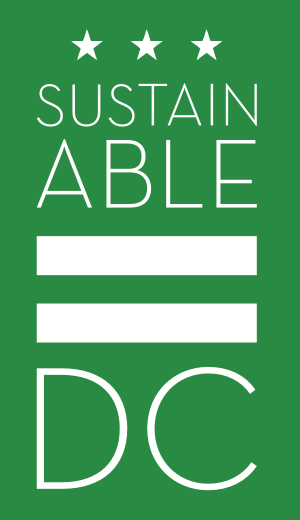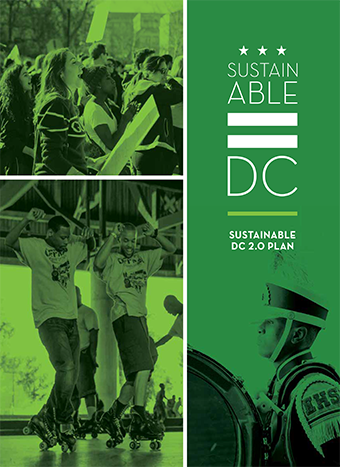The Sustainable DC 2.0 Plan is the city's plan to make DC the healthiest, greenest, most livable city for all residents. It was developed through a process that engaged thousands of residents to hear their priorities and get feedback on draft content. The plan addresses how to balance the environmental, economic, and social needs of the District of Columbia today as well as the needs of the next generation, and the one after that. Sustainable DC aligns with, and has inspired, other District plans on specific topics. The Sustainable DC team, with staff from the Department of Energy and Environment and the Office of Planning, works with partner agencies to conduct progress reports on how the city is doing toward the goals, targets, and actions established in Sustainable DC 2.0.
How to Use the Plan
The Sustainable DC 2.0 Plan can be viewed or downloaded at the bottom of this page. It covers 13 topics: governance, equity, built environment, climate, economy, education, energy, food, health, nature, transportation, waste, and water. The plan can be read cover-to-cover, if you are feeling ambitious, or as individual sections if you are interested in a specific topic. For a summary of what each topic covers, a timeframe for implementation, and which District Government agencies are responsible for implementation, turn to the chart at the end of the plan.
See the Plan in Action
The Sustainable DC team is developing a series of videos that highlight real-world projects in the District that help advance the goals, targets, and actions in the plan. Each video features a walking path in a specific neighborhood that includes a variety of features such as green buildings, nature restoration projects, and more. Use the videos as inspiration and head out to see sustainability in action all around the District for yourself! Check back for more videos. Want to create your own sustainability walking path? Use the Sustainability Points of Interest in the District Map to see what sustainability features are around.


